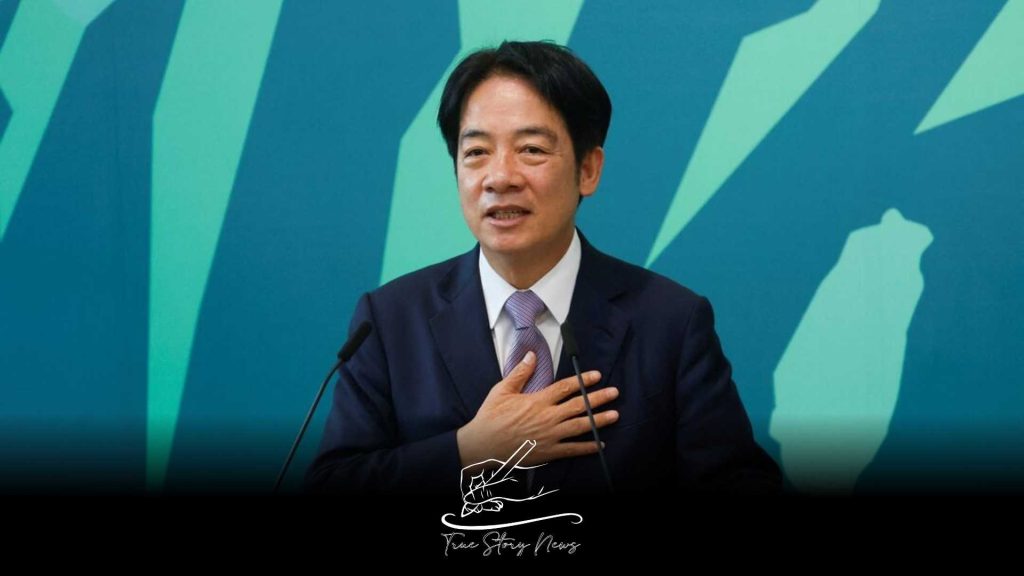On Monday, China initiated new military exercises off the coast of Taiwan, characterizing the actions as a form of “punishment” in response to remarks made by President William Lai, who pledged to “resist annexation” and “encroachment upon our sovereignty.”
China asserts ownership over the self-governing island of Taiwan, with President Xi Jinping declaring a commitment to reclaim it by force if required.
Taiwan reported the detection of 34 naval vessels and 125 aircraft maneuvering in formation around the island on Monday.
Recent maps released by Chinese state media suggest that military forces are strategically positioned around the entirety of the island. The drills were reported to have been successfully concluded, according to later statements.
The People’s Liberation Army (PLA) of China has announced that its recent military exercises engaged all branches of the armed forces, aiming to simulate a comprehensive assault on Taiwan via land, sea, and air operations.
Senior Captain Li Xi, the spokesperson for the PLA Eastern Theater Command, stated that the recent drills “fully tested the integrated joint operation capabilities” of the troops involved.
Taiwan’s airports and ports maintained regular operations without disruption.
The Taiwanese defence ministry issued a statement denouncing the actions taken by China, emphasizing its commitment to preventing confrontations that could exacerbate the ongoing tensions. Authorities have placed outlying islands on high alert, according to reports.
China’s foreign ministry has officially acknowledged conducting simulations of military attacks and port blockades, characterizing Taiwanese independence as fundamentally “incompatible” with regional peace.
The Chinese coast guard shared a post on its Weibo account illustrating the route of its patrol in the form of a heart.
Since 2022, China has conducted multiple significant military exercises near Taiwan’s coast, with its fighter jets frequently breaching Taiwanese airspace.
The recent military exercise, referred to as Joint Sword 2024-B by Beijing, has been anticipated since May, when similar drills, officially designated as part A, were conducted.
The exercise, characterized by China as its largest to date, was strategically timed to align with the inauguration of President Lai, whom Beijing has consistently labelled a “troublemaker” for his pro-independence stance regarding Taiwan.
On Taiwan’s national day, his recent remarks drew sharp condemnation from China, which accused him of heightening tensions with “sinister intentions.”
While these drills were anticipated, the proximity of Chinese ships and aircraft to Taiwan, coupled with the intense rhetoric, may be interpreted as a display of aggressive behaviour.
Under different circumstances, this action might have been perceived as a significant escalation; however, it unfolded amid already heightened tensions.
The United States responded by asserting that there was no justification for the military drills following Lai’s “routine” speech, urging China to refrain from any further actions that could threaten peace and stability in the region.
The history of military intimidation by China towards Taiwan can be traced back to 1996, following Taiwan’s inaugural direct presidential elections. China has announced that multiple regions surrounding Taiwan are now restricted, simultaneously launching short-range ballistic missiles into these designated zones off both the northern and southern coasts.
In a strategic maneuver, U.S. President Bill Clinton deployed Navy forces into the Taiwan Strait, signalling to Beijing the United States’ commitment to thwart any potential aggression against the island.
Tensions saw a significant reduction from 2008 to 2016, but this shift was disrupted by the election of Tsai Ing-wen as president, representing Taiwan’s Democratic Progressive Party (DPP). China views the DPP as a staunch pro-independence party, leading to a complete cessation of direct communications with the government in Taipei.
The situation has persisted since that time.
In August 2022, U.S. House Speaker Nancy Pelosi made a historic visit to Taipei, marking the first time a sitting House Speaker had travelled to the island since 1997. Beijing perceived Pelosi’s visit and her explicit backing of Taiwan as a significant provocation, approaching what could be interpreted as formal recognition of the Taiwanese government by a high-ranking U.S. official.
The response was marked by intensity, featuring two days of military exercises and, for the first time, the launch of ballistic missiles over the island and into the Pacific Ocean.












